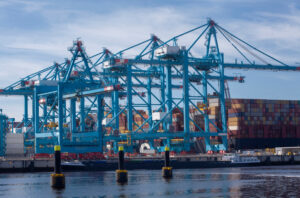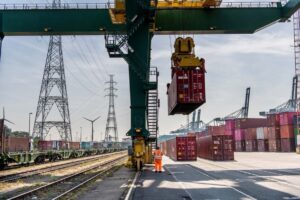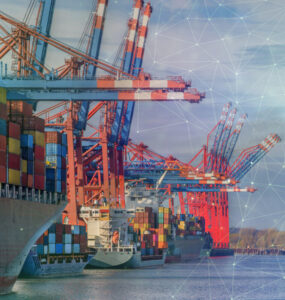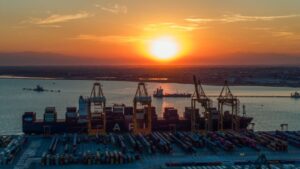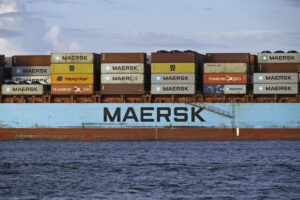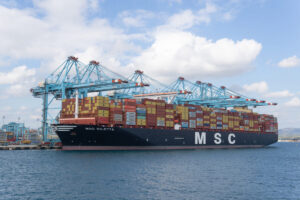In the maritime industry, and more specifically container shipping, much attention is focused on port and containership performance, as the industry strives to better the time in which a ship can be unloaded and ready to make its next call. However, how important are the smaller vessels, namely tugs, which facilitate mega-ships coming into ports?
Escort Tugs, which provide immediate assistance to giant container vessels are an essential part of port operations and will typically be placed behind a vessel and be attached to a towing line. Pilots guide the tug and monitor when to pull a ship at a certain angle. When a ship is not being ‘tugged’, the towing line will remain slack.
Assist Tugs may also be required during port transits and are essential for positioning tugs alongside a vessel, applying force to assist the making of turns, reducing speed, providing propulsion and docking.
The operations department at the Port of Montreal outlined for PTI how tugs are utilised: “Tug boats are necessary for assisting mega-ships in ports while docking and undocking. Depending on many factors, the required tug boat bollard pull and the number of tug boats used will vary.
“The main objectives for [a] tug assist is to induce gyration movement, control speed and counter a vessel’s inertial mass without a vessel’s main propeller whilst at the berth to protect hull and berth integrity.
(Source: iStock)
“This decision is first made depending on the location characteristics and prevailing weather conditions. Restricted manoeuvring room, limited water depth, current and, the vessel dimensions are some of the factors guiding this decision.”
Tugboats were essential during the Panama Canal’s expansion project, which is due to be completed in April, 2016, being key in supporting dredging activities. On a day-to-day basis, a tug’s primary duty is to support containerships and other vessels in manoeuvring in and out of the canal’s locks.
Since ships are not allowed to accelerate when passing through the Panama Canal locks, tugs are vital for ensuring that ships are aligned with perfectly. Depending on ship-size, more than one tug may be required to steer a ship, which involves the captain communicating with the pilot overhead.
Alan Loynd, Managing Director, Branscombe Marine Consultants and former employee of HK Salvage and Towage, argues the tugs are now vital for the majority of containership berths at ports: “With the exception of some smaller and highly manoeuvrable vessels, tugs are vital in berthing the vast majority of ships. Modern ships tend to be configured to move large amounts of cargo as efficiently as possible.
“They are very good at sailing from place to place, but they are not designed to be nimble. Thus when they reach port approaches, they require tugs to help them weave through the harbour.
“When they reach the berth they cannot move themselves sideways, so the tugs take over and push them alongside. Some ports are so constricted, and some ships so big that a tug is also needed to tie up to the stern and act as a dynamic rudder as the big ship comes into port. This is known as indirect towing.”
(Source: Damen Shipyards)
Loynd continues: “It is worth pointing out that tugs cannot always see where they are going.
“Pushing against the side of a large containership, bulk carrier or oil tanker, all you can see is the side of the ship in front of you. Hence one reason for having a pilot on the bridge – he can see everything, and can tell the tugs when to push, when to pull etc. So tugs are almost always responding to orders from a pilot in harbours and rivers.”
Dirk Degroote Manager of Design and Proposal of Tugs at Damen Shipyards Gorinchem, said: “From a designer and builders’ perspective, we see a clear trend towards more compact, more powerful tugs and the increasing importance of automation and sensor information.
Read more about Damen Shipyards in our Supplier Directory
“The increasing importance of automation and sensor information on board is a logical next step if we look at the level of automation already present in some of the container terminals and at the technologies available in other industries. Therefore, we are also investing heavily in this field to cope with the challenges of the future.”
So, along with the appropriate technology of the tugs and with the help of pilots, tugs can be vital for ensuring that vessels can make a safe transit; and with automation becoming more important for tug operations, it appears to be an up and coming trend in the development of tugs.
According to Crowley Holdings, the technology available for designing and building tugs can be vast, and it is more important to balance commercial viability with the best available technology.



